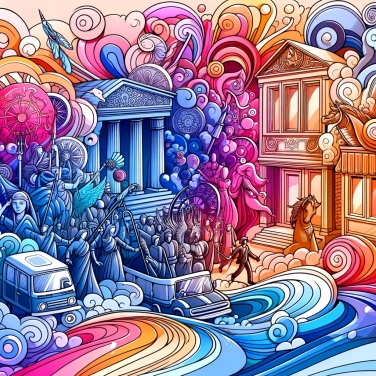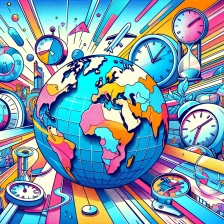In detail, for those interested!
Retinal persistence
Retinal persistence is a physiological phenomenon that occurs when the human eye continues to perceive an image for a short period of time, even after that image has disappeared. This phenomenon is due to the way the cells of the retina capture light and transmit it to the brain. In simple terms, when our eyes see an image, that image is briefly recorded by the retina before being processed and interpreted by the brain.
Retinal persistence is the basis of many visual technologies, including cinema. By projecting a series of still images at a fast enough speed, usually 24 frames per second, the human brain interprets them as smooth movement. This creates the illusion of continuous motion on the screen, even though each image is actually seen for a brief moment.
This phenomenon is closely related to the refresh rate of images in visual media. By using retinal persistence to our advantage, we can create immersive and captivating visual experiences, whether it be in cinema, television, or on our electronic devices.
Fluidity of movement
The fluidity of movement in films projected at 24 frames per second is a crucial aspect of the visual experience. This projection speed was chosen for several reasons, including its impact on the perception of movement. When images are projected quickly one after the other, our brain interprets them as smooth movement. This creates an illusion of continuity that allows the viewer to perceive actions on the screen in a natural way.
By increasing the number of frames per second, the fluidity of movement can be improved, but it can also alter the cinematic aesthetic. For example, films shot at 60 frames per second may appear too real, thus losing the artistic character and "magic" associated with traditional cinema. Additionally, a higher frame rate would require specific projection equipment, which could make film distribution more expensive and less accessible for many theaters.
In summary, projecting films at 24 frames per second offers a balance between the fluidity of movement and cinematic aesthetic, allowing directors to effectively convey their vision while preserving the artistic aspect of the cinematic medium.
History of the standard
The history of the 24 frames per second projection standard dates back to the early days of cinema. This projection speed was established as the standard during the transition from silent to sound in the 1920s. At that time, engineers agreed that 24 frames per second offered an ideal compromise between visual quality and synchronized sound.
Over the decades, the 24 frames per second standard has firmly established itself in the film industry. This projection speed has become the benchmark for the majority of films, creating continuity and uniformity in the cinematic experience for audiences worldwide.
Although other projection speeds have been experimented with over time, 24 frames per second has remained the dominant standard, widely adopted by the film industry to ensure optimal visual quality and a consistent cinematic experience.
![Explain why some countries change time zones?]()
![Explain why Alexander the Great refused to wear shoes.]()
![Explain why Alexander the Great always wore an impressive helmet.]()
![Explain why the last Chinese emperor was so young when he came to power?]()




















